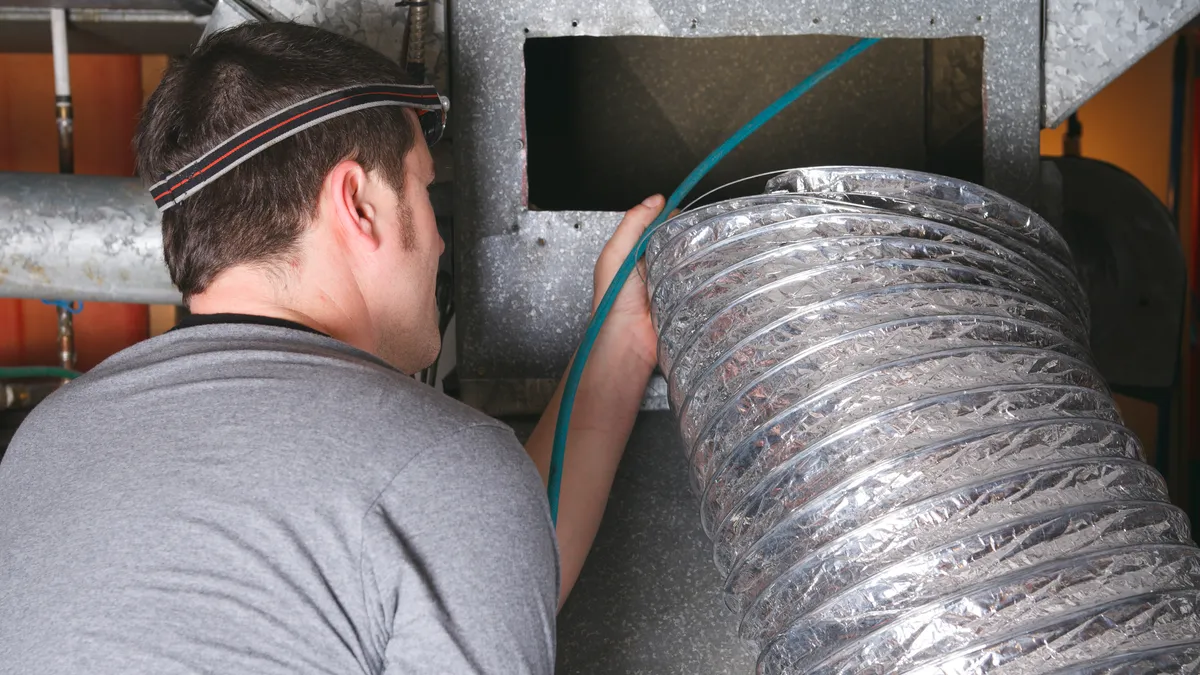Dive Brief:
- Expanding the U.S. Internal Revenue Service’s clean electricity investment tax credit to cover building energy efficiency investments could help commercial property owners address economic challenges such as declining occupancy rates and growing climate threats, according to a set of policy recommendations released Tuesday by four sustainable building organizations.
- The policy agenda urges Congress to update the Section 48E Clean Electricity Investment Tax Credit to include new and retrofit building energy efficiency investments that improve the building envelope, HVAC, water heating and energy management systems. The tax credit’s value would be tied to defined technologies’ performance.
- The policy agenda also calls for more federal support for office-to-residential conversions, low-embodied-carbon construction materials, indoor air quality, commercial building data collection and financing and insurance incentives for efficiency and resiliency.
Dive Insight:
The organizations’ call for action comes as commercial building owners, operators and developers face rising interest rates, high vacancy rates, increased insurance and construction costs, aging buildings and increasingly severe weather events.
Energy efficiency investments such as installing upgraded insulation, windows or heating and cooling equipment are covered by the tax code’s Section 179D Energy Efficient Commercial Building Tax Deduction, which allows a tax deduction of up to $5 per square foot for improvements that reduce energy use intensity by 25% to 50% compared with their baseline performance, which is “far less valuable” than the ITC credit of 30% of the investment, according to a draft proposal to expand the EE-ITC filed by the U.S. Green Building Council in June.
“Deep retrofits and efficient technologies with the greatest potential impact can be out of reach for existing commercial buildings due to the high upfront cost,” said Elizabeth Beardsley, senior policy counsel at USGBC. “The EE-ITC would help commercial building owners and operators make these investments workable and significantly reduce the payback period.”
The IRS’ new technology-neutral framework for energy efficiency investment tax credits applies to technology that can generate zero-emissions electricity, but energy efficiency “does not appear to qualify” for the credit as it does not generate electricity, the draft proposal says. However, an EE-ITC that includes energy efficiency could build upon the existing Section 179D tax deduction structure, which has a framework for assessing the cost of energy efficiency improvements, it says.
The EE-ITC provides a tax credit covering 30% of qualified investments for new construction that is certified to meet or exceed the national definition of a zero-emissions building or similar certifications. The credit drops to 6% if Inflation Reduction Act prevailing wage and apprenticeship requirements aren’t met. The proposal calls for allowing retrofits to existing buildings that reduce energy use intensity by 20% to 30% to earn a 20% tax credit, while those that reduce EUI more than 40% to qualify for a 30% credit.
While a failure to meet labor provisions would reduce those credits, the proposal would allow property owners and developers undertaking energy efficiency projects under the EE-ITC to apply bonus credits, direct pay and transferability options.
The policy recommendations also call for the incoming administration to create a tax credit or bonus for encouraging office-to-residential conversions. “Conversion projects are happening, but the costs can be high and there remain missed opportunities,” the policy agenda states, pointing to “critically low” office and retail occupancy rates in many cities. This action can be achieved by amending various existing laws, including through accelerated depreciation or bonus incentives for conversion projects under the Section 48 Clean Electricity Investment Tax Credit or the aforementioned Section 179D, the document notes.
“There have been success stories already with this approach,” Beardsley said. “While it is acknowledged that, post-pandemic, we will need less office space and more housing, these conversions can be initially costly. Having a bonus or tax credit for conversions could make a real difference.”
Other policy proposals call for more technical guidance and best practices to help building owners improve indoor air quality, better data and research on building energy consumption and life cycles, support of markets for low-embodied carbon construction materials, and fostering engagement between federal agencies, financial institutions and insurers to provide clearer risk data on commercial buildings that can inform efforts to boost their resilience to hazards and extreme-weather events.
“While the two presidential tickets clearly have different priorities, we see policies that advance green buildings as bipartisan and fundamentally win-win,” Beardsley said.














